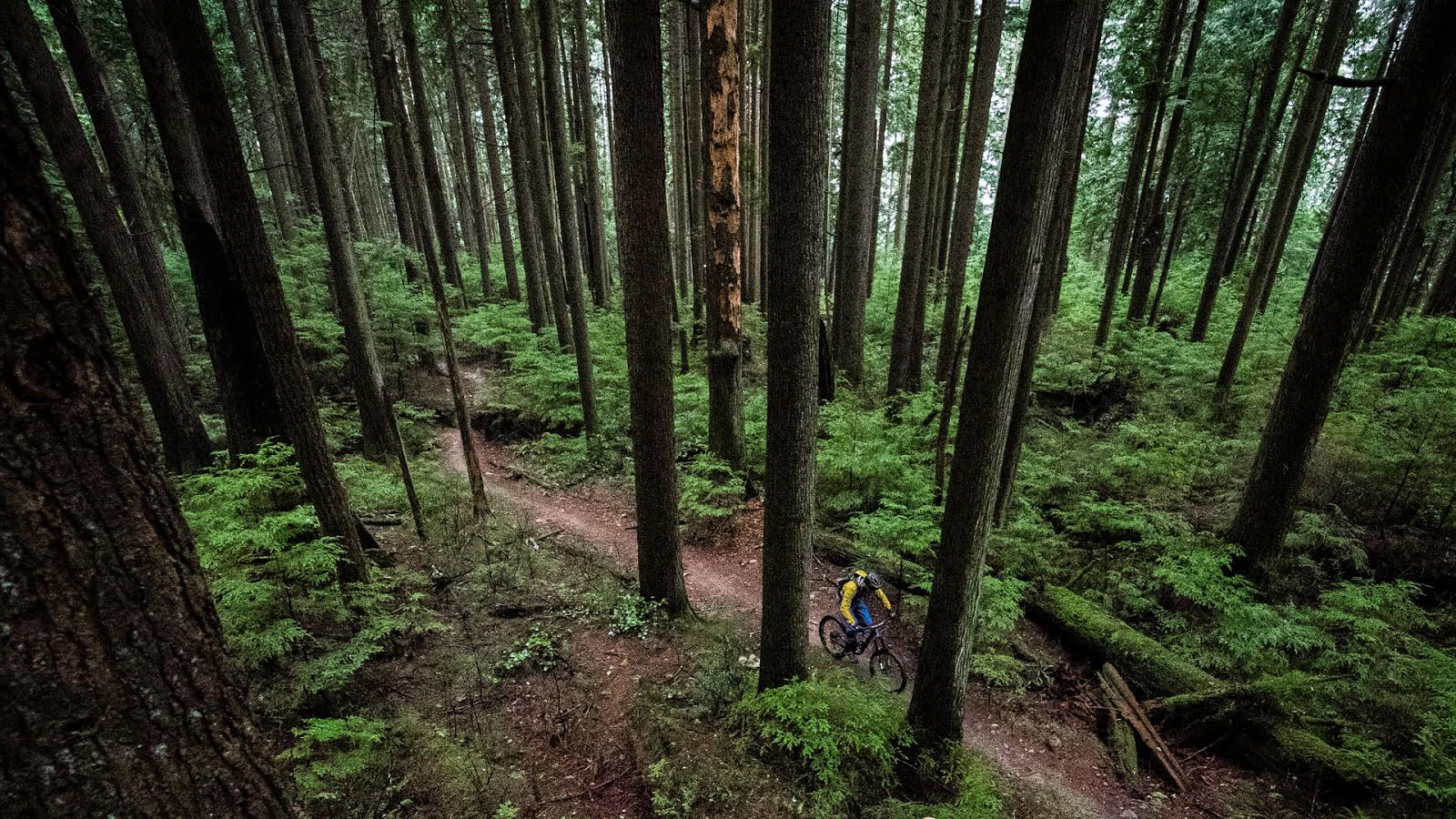
Norco 2011 – the Range, Vixa & Fluid
Norco has been making bikes for more than four decades, and in that time has turned out some pretty impressive bikes. The company has always been more of a Canadian brand than an international brand, but the love is spreading and riders around the world are getting to know these bikes.
Norco is often one of the first companies to launch its new models each year, rolling out the next model year bikes about six months into the current year, and it was no different for the 2011 line-up.
The big news coming out of Norco this year was the launch of its new Advanced Ride Technology (A.R.T.) suspension design. A.R.T. is a modified Horst Link design with slightly different pivot locations. They’re still below and in front of the rear axle, so it doesn’t require a new patent, but the new location allows for additional chain growth and a more rearward axle path. The graph below illustrates the new wheel path compared to that on a 2010 bike.
Axle path for the new A.R.T. design (blue line) is more rearward, to reduce squat and pedal bob on the bikes.
Norco says the new pivot locations increase the anti-squat characteristics of the FSR suspension design that it has used for years, which in turn reduces suspension bob and makes the bike pedal more efficiently. The revamped axle path results in a wheel path that goes further back as it’s moving up, and that’s supposed to give you a smoother, faster ride.
A.R.T. is making an appearance on four models for 2011: the new all-mountain Range, the women’s-specific Vixa, the Shinobi 29er and the Phaser XC race bike. Expect to see it on other bikes in the 2012 model year, including the Shore freeride bike.
There are a few other new technologies showing up on Norco bikes this year: 10-speed drivetrains, most of which have a 36T cog on them; tapered head tubes; the Syntace 142mm rear axle system (more on that below); and post-mount brakes, which allow you to run one less adaptor for your rear brakes. Many models are also using straight seat tubes instead of interrupted seat tubes.
As you can imagine, not all of the 165 bikes produced by Norco are relevant for nsmb readers so I’ll focus on six different bikes that most of our readers will be eyeing up. In this instalment, we’ll look at the Range, the Vixa and the Fluid.
The Range bikes
The Range line of bikes is the other big story coming out of Norco for 2011. It’s a 6” all-mountain bike that is designed slide in between the company’s Fluid LT, which had a definite XC bent and the Six, which saw a lot of bike park and shuttle action. The bikes had the same travel, but Norco found that they weren’t being ridden in the same way. The Range is designed to climb better than the Fluid LT but offer the descending and big(ger) hit capabilities of a Six, with a full-length seat tube and a lighter overall package. The fact that it’s a perfect platform for the new A.R.T. suspension design isn’t a coincidence. Both bikes have been retired in favour of the Range.
The Range SE shares the same frame as the Range 1 & 2, but gets the lightweight, Gucci build – hence the hefty price tag. Cable routing underneath the down tube makes for clean lines, while the full-length seat tube allows for a lot of adjustability.
Some details for the Range: it’s available in five sizes, from extra small to extra large. Head angle is 66.5°, seat angle is 73.0° and bottom bracket height is 13.97”. Tubing is heavily hydroformed, and the head tube tapers from 1 1/8” at the top to 1.5” at the bottom. The Range SE, Range 1 and Range 2 use the A.R.T. suspension, while the Range 3 uses a standard VPS design in order to keep the price down. A new welded one-piece link arm ensures that the rear end is stiff, and handholds on the arm make it easier to carry the bike. Ranges come with ISCG 05 tabs for chainguides, as well as top tube cable guides for height adjustable seatposts. The bikes aren’t spec’d with the posts, however, in order to keep costs and weight down.
Another new piece of technology for 2011 is the Syntace X-12 142mm rear axle system. Without getting into too much detail, this through axle system relies on notched dropouts on the inside of the frame to hold the rear wheel (the same idea as the dropouts in a through axle fork) for quick and easy rear wheel alignment. The entire axle is loosened with a 5mm Allen key on the non-drive side.
No quick release skewer makes the system lighter, and it means one less thing for you to catch on rocks or trees. The Syntace design also provides 360° of contact for the axle when it’s screwed into the drive-side nut, rather than the two points of contact provided by the expanding wedge on a Maxle rear axle system.
Another benefit of the Syntace rear end is that the traditional rear derailleur hanger gets the boot. It’s now attach to a beefy vertical bracket that sits below and behind the axle. This new hanger is designed to break off in the event of a serious impact; new bikes from Norco will come with a replacement hanger bolt mounted on the frame. Check out Syntace’s web page for more details on the 142 rear end system.
Pivot bolts have been colour-coordinated with the Crank Brothers Iodine wheelset and frame highlights.
The Range is an evolution of existing bikes, but Norco isn’t moving away from aluminum frames just yet. According to one of the engineers I spoke with, there has been discussion about a carbon Range, but at this time it’s not high on Norco’s priority list.
Expect to see the Ranges in bikes stores in October 2010.
RANGE SE COMPONENT HIGHLIGHTS
Fox Float 36 FIT RLC 160 mm fork with tapered steerer, Fox RP23 rear shock, Race Face Sixc carbon bars, Race Face Atlas AM stem, Ritchey WCS carbon seatpost, Selle Italia SLR titanium saddle, SRAM XX brakes with185 mm front and 160 mm rear rotors, SRAM X.O 3 x 10-speed shifters and derailleurs, SRAM XX 10-speed cassette, Race Face Sixc carbon cranks, Crank Brothers Iodine AM wheelset, Schwalbe Knobby Nic 2.25” kevlar tires
Weight – 26.6 lbs
MSRP – US$6,950 / CAD$7,799
RANGE 1 COMPONENT HIGHLIGHTS
Fox 36 TALAS FIT RLC, Fox RP23 rear shock, Race Face Sixc carbon bar, Race Face Atlas AM stem, Avid Elixir R brakes with 185mm rotors, Shimano XT 3 x 10 speed shifters, Shimano SLX front derailleur and Shadow XT rear derailleur, Shimano SLX 10-speed cassette, Shimano XT crankset, DT M-480 Enduro rims, Knobby Nic tires
Weight – 29.1 lbs
MSRP – US$4,580 / CAD$5,000
RANGE 2 COMPONENT HIGHLIGHTS
RockShox Lyrik 2-Step RC2L fork, RockShox Monarch RT 3.3 rear shock, Norco alloy riser bar, Race Face Evolve AM stem, Avid Elixir 5 185mm brakes, SRAM X.7 3 x 10-speed shifters, Shimano SLX front derailleur and SRAM X.9 rear, SRAM X.7 crankset, DT M-480 Enduro rims, Knobby Nic tires
Weight – 30.1 lbs
MSRP – US$3,365 / CAD$3,650
RANGE 3 COMPONENT HIGHLIGHTS
RockShox Lyrik U-Turn fork with 115-160mm of travel, Monarch R rear shock, Avid Elixer 3 185mm brakes, SRAM X.5 3 x 9-speed shifters, Shimano Deore front derailleur and SRAM X.7 rear derailleur, FSA Moto X Mega Exo AM crankset, Alex SX 44 rims, Kenda Nevegal tires (2.35” front, 2.1” rear)
Weight – 34.4 lbs
MSRP – US$2,415 / CAD$2,625
The Vixa
The Vixa is Norco’s women’s-specific bike designed by pro freerider Darcy Turenne. It was introduced in 2008 and was a popular choice among the ladies. It did suffer a bit because it was a little portly, and there was no large size available. Norco addressed both of those issues for 2011, and changed the design to a straight seat tube as well.
The Vixa is a good example of the new look of Norco frames. It has the new A.R.T. suspension and 142mm rear end, and went on a diet for 2011.
With 160mm of travel, the Vixa is capable of handling just about any type of riding from all-mountain and back country to enduro races or bike park riding. Like the other bikes that got a major facelift in ’11, it gets the A.R.T. suspension design and the Syntace rear end.
The hand holds on the rocker arms are designed to make the bike easier to carry. You’ll find them on the Range, as well.
There are a number of features that are specifically designed to make this bike more appealing to women riders. Shorter chainstays and top tubes improve the fit, while things like narrower bars, thinner grips, a women’s-specific saddle and brake levers that sit closer to the bars make for a more comfortable ride experience. Delivery of the new Vixas is scheduled for October 2010.
The welded link arms dramatically increase rear end stiffness on the Vixa and Range.
Head angle on the Vixa is 66°, while the seat angle is 73°. Standover height is an issue for many women, so Norco has set it at 28.97” for the small Vixa up to 29.88” for the large, so there should be enough clearance room for even the very short girls out there. There is only one model of the Vixa available in 2011.
Tapered head tubes provide more surface area for welds, as well as facilitating a larger steerer and crown in an area that is subject to a lot of stress. You’ll see them on several models for 2011, including the Range, Vixa and Shinobi.
VIXA COMPONENT HIGHLIGHTS
RockShox Lyrik fork, Monarch R rear shock, WTB DEVA Comp saddle, Shimano M-575 brakes with 180mm rotors, Shimano SLX 3 x 10 speed shifters, SLX derailleurs, Shimano M-552 cranks, Alex SX 44 rims, Kenda Nevegal 2.35” tires
Weight – 33.5 lbs
MSRP – US$2,835 / CAD$3,100
It’s easy to spot the toptube cable guides for height-adjustable seatposts on the Vixa. These are also on the Range and Shinobi. The design is similar to a water bottle boss, and can be removed if you’re not using them.
Norco is using a post-mount brake interface on several models this year. Calipers used with a 6″ rotor bolt straight onto the frame, while 7″ and 8″ rotors use the standard post-mount adaptors. This is also a good illustration of the non-drive side of a Syntace rear axle looks like.
The Fluid
The 5” trail bike category is huge in some parts of North America, but not quite as popular in others. Southwest B.C. would be one of those areas where it has a limited following. That said, the Fluid series is a very good example of the things most people are looking for in a 5-and-5 bike.
The Fluid 1 is a clean-looking bike that’s well suited for trail riding.
Fluids come with an M6 scandium frame tubing with a hydroformed down tube; the head tube is 1 1/8″ at top and bottom. Rear travel is set at 140mm, and the suspension uses a two-piece forged link arm; unlike previous Fluids, there is no travel adjustability in the ’11 models.
It does, however, get a slacker 68° headtube angle for improved trail handling. Fluids are available in sizes from XS to XL, and use the standard FSR suspension and rear dropout for 2011.
Linkage arms on the Fluids are bolted together, rather than being welded together like those on the Range or Vixa.
FLUID 1 COMPONENT HIGHLIGHTS
Fox FRL OB 150mm fork with 15mm axle, Fox Float R rear shock, Avid Elixir 5 brakes with 185mm rotors, Shimano XT 3 x 10-speed shifters, SLX front derailleur, XT rear derailleur, Shimano FCM 552 crankset, Mavic XM- 117 rims, Continental Mountain King 2.2” tires
Weight – 28.9 lbs
MSRP – US$2,325 / CAD$2,640
FLUID 2 COMPONENT HIGHLIGHTS
RockShox Sektor Solo Air 150mm fork with15mm axle, RockShox Monarch R rear shock, Avid Juicy 3 brakes with 185mm rotors, Shimano SLX 3 x 10-speed shifters, Shimano SLX derailleurs, Shimano FCM 552 crankset, Mavic XM-117 rims, Kenda Nevegal 2.1” tires
Weight – 29.4 lbs
MSRP – US$1,825 / CAD$2,035
FLUID 3 COMPONENT HIGHLIGHTS
RockShox Tora U-Turn coil with 85-130mm of travel, RockShox Bar 2.1 rear shock, Avid Juicy 3 brakes with 185mm rotors, Shimano Alivio 3 x 9-speed shifters, Shimano Alivio front derailleur and Deore Shadow rear derailleur, Alivio crankset, Alex TD 25 D/W rims, Kenda Nevegal 2.1” tires
Weight – 33.4 lbs
MSRP – US$1,315 / CAD$1,455
Ride impressions – The Range
Media events are a strange place to try and get an idea of how a bike rides. You’re riding a new bike that’s probably not set up to your personal preferences, on trails you’re not familiar with. It’s fun, but you usually spend more time worrying about staying upright than whether the suspension feels linear…
This time, however, things worked out in my favour. The XL Range I was riding is very close in size and design to my personal bike, which meant that I knew how the Range should ride and what it should be capable of doing. We were also riding on the North Shore – home court for those of us at nsmb.com. The fact that I had ridden the same trail (CBC) two days before the launch was just icing on the cake.
In case you were wondering what’s possible on a Range, here’s an idea. Martin from Norco’s UK distributor nose wheelied down the natural drop on Ned’s on his Range.
First off, sizing. The XL Range 1 I was riding fit like it should, and the cockpit was in the right place for an all-mountain bike – far enough out front for climbing but still upright enough to allow you to get over the back on steep sections. Standover height was good, thanks to the swoopy top tube.
The first section of the trail is filled with wooden structures followed by technical, rocked-in corners. The Range handled all of these quite well, and tracked through everything cleanly. Wheelbase length felt good – long enough to keep the ride smooth without being cumbersome or feeling like it was wallowing. Handling on the technical sections of trail and the skinnies was solid, thanks to the 66.5° head angle. The slacker head angle also made it easy to roll steeper lines with confidence.
Unfortunately, it wasn’t really possible to judge the Range’s climbing abilities on this trail as it was almost all downhill. Issues with pinch flats also made it hard to test how the bike handled at speed or in the rough sections.
I wasn’t hitting this gap on my Range, but several of the riders at the launch were. Norco pro rider Jay Hoots goes first and Dylan Korba follows closely behind.
Although I wasn’t able to spend a lot of time on the Range, it has all the elements that should make for a solid riding bike: 6” of travel, relatively light weight, a head angle that makes sense, good components and suspension and an updated version of a proven suspension design. Stay tuned for a long-term test of the Range on nsmb, when we’ll go into depth on the ride characteristics of this new all-mountain bike.
So there you have it – the first look at the 2011 Norco bike launch. In the next article, I’ll look at the DH bikes, the venerable Shore and the all-new Shinobi 29er.
Like what you see? Have questions? Think the angles are whack? Of course you do. Go to the boards and start typing…













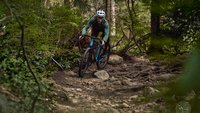
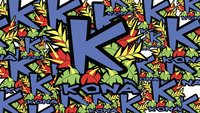
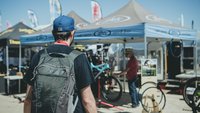


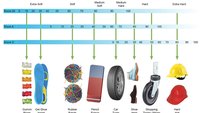
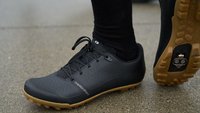
Comments
Please log in to leave a comment.